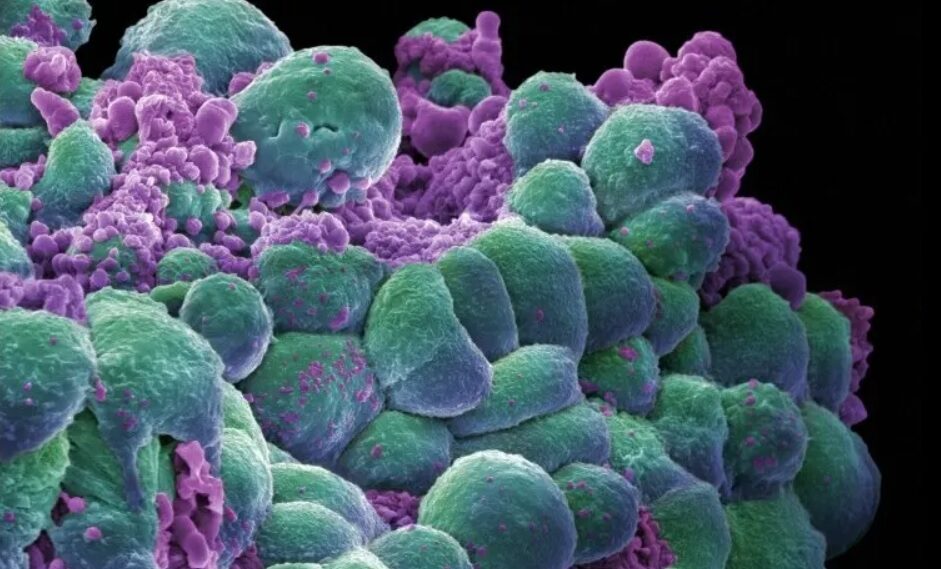Cancer is the second leading cause of death in Estonia after cardiovascular diseases, and therefore finding new, more effective treatments are very important. One promising option is using low-temperature gas plasma, writes Sirli Raud, Associate Professor in Human Physiology at the University of Tartu.
In today’s developed society, the incidence of cancer is on the rise. This is explained by various factors, such as increased life expectancy, decreased physical activity, environmental pollution, etc.
Currently, one of the most common treatments is chemotherapy. Unfortunately, many chemotherapeutic agents are not very selective – in addition to cancer cells, they also kill healthy, rapidly proliferating cells. Therefore, chemotherapy often has serious side effects, such as baldness, ulcers of the gastrointestinal mucosa, low blood cell count, etc. Patients tolerate these side effects poorly as they significantly reduce patients’ quality of life and may also affect their compliance and treatment options.
The ability of low-temperature plasma to selectively kill cancer cells was discovered in 2007 quite accidentally. This was the start of a large number of high-level studies that have mainly shown the potential of plasma therapy in treating various tumours. In these applications, the plasma source is usually a plasma jet, in which the plasma is ignited in a quartz tube about one millimetre in diameter in a high electric field and in a flow of inert gas such as helium or argon.
Upon leaving the tube, the plasma particles react with the molecules in the air and further with the molecules of the fluid surrounding the cells. In this process, reactive oxygen, halogen and nitrogen particles such as ozone, hydrogen peroxide, hypochlorous acid, nitrite ion, nitrate ion etc are formed in the liquid. It has also been shown that when water is treated with plasma and later treated water is added to the cells, it also has a destructive effect on cancer cells.
It is currently understood that the cell killing effect is due to the action of reactive particles generated by plasma. However, it is still unknown what the different effect on cancer cells and healthy cells results from. Several hypotheses have been proposed to explain this.
Cancer cells already have a higher content of reactive oxygen particles than healthy cells before the plasma treatment, and therefore cancer cells are thought to be unable to cope with the additional flow of plasma-generated reactive particles.
Plasma-induced reactive particles can diffuse into cancer cells more easily because there are more diffusion-promoting cell membrane structures, aquaporins, in cancer cells than in healthy cells.
Cancer cells are more sensitive to the cell membrane damaging effect of reactive particles than healthy cells because they have less cholesterol in their cell membrane.
The above factors can lead to immunogenic cell death. Under the influence of plasma treatment, cancer cells produce markers that trigger the body’s immune response, and as a result, the cancer cells that have not been in direct contact with the reactive compounds produced by the plasma also get attacked. This way, one point of attack is enough for plasma treatment, and the body’s immune system does the rest of the work in destroying the tumour cells without damaging the healthy cells.
Another critical issue is the biological role of the various reactive particles generated by plasma. This is not easy to ascertain because, as noted above, when plasma particles react with air molecules, they generate many different reactive compounds.
In recent years, University of Tartu researchers from the Institute of Biomedicine and Translational Medicine and the Institute of Physics have been actively involved with this topic. Within the framework of the Estonian Research Council’s grant “The effect of plasma products on the viability of cancer cells,” plasma physicists built a unique plasma reactor, which allows significantly better control of the composition of reactive particles generated by plasma in the liquid.
For example, it is possible to generate only reactive oxygen or halogen particles without nitrogen compounds. The collaborative project showed that hydrogen peroxide and hypochlorous acid are important cancer-killing compounds. However, different types of cancer have different sensitivities to these compounds.
For example, in the case of the melanoma cell line M21, both hydrogen peroxide and hypochlorous acid are effective. However, the ovarian cancer cell line, SKOV-3, which is virtually insensitive to hydrogen peroxide, can be destroyed with a liquid containing hypochlorous acid. Under certain conditions, reactive nitrogen compounds even increase the resistance of cancer cells to plasma treatment.
There is still a long way to go before gas plasma treatment can be translated to clinical practice, but this is underway. As the next steps in the research, we plan to study the interaction of plasma-induced reactive particles and nanoparticles on cancer cells, as well as on animal models of cancer.
The translation of this article from Estonian Public Broadcasting science news portal Novaator was funded by the European Regional Development Fund through Estonian Research Council.
 Back
Back



